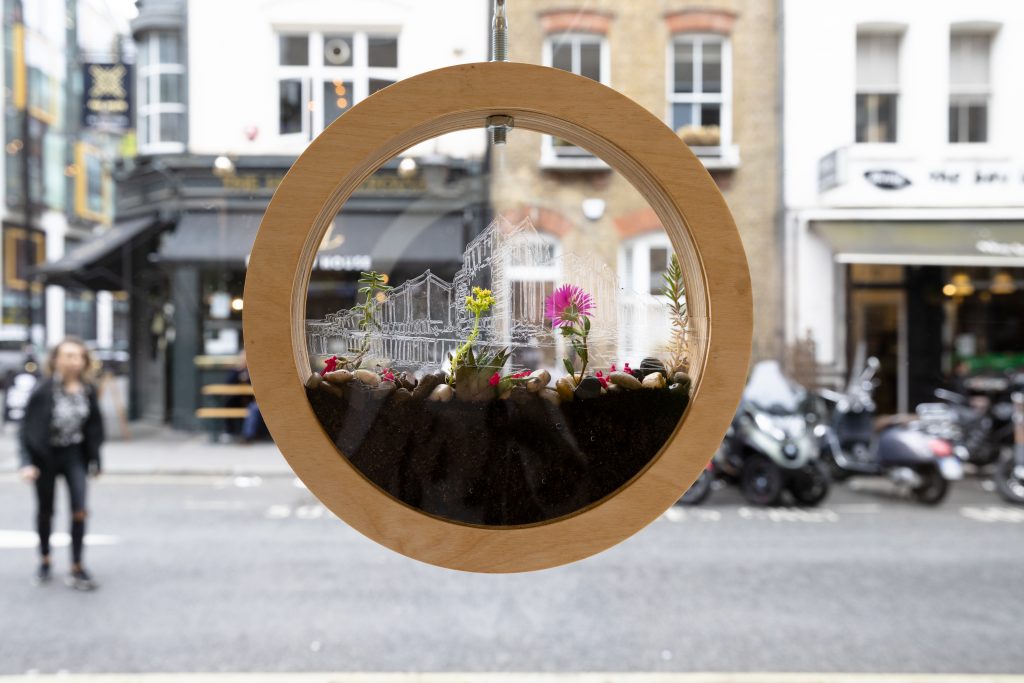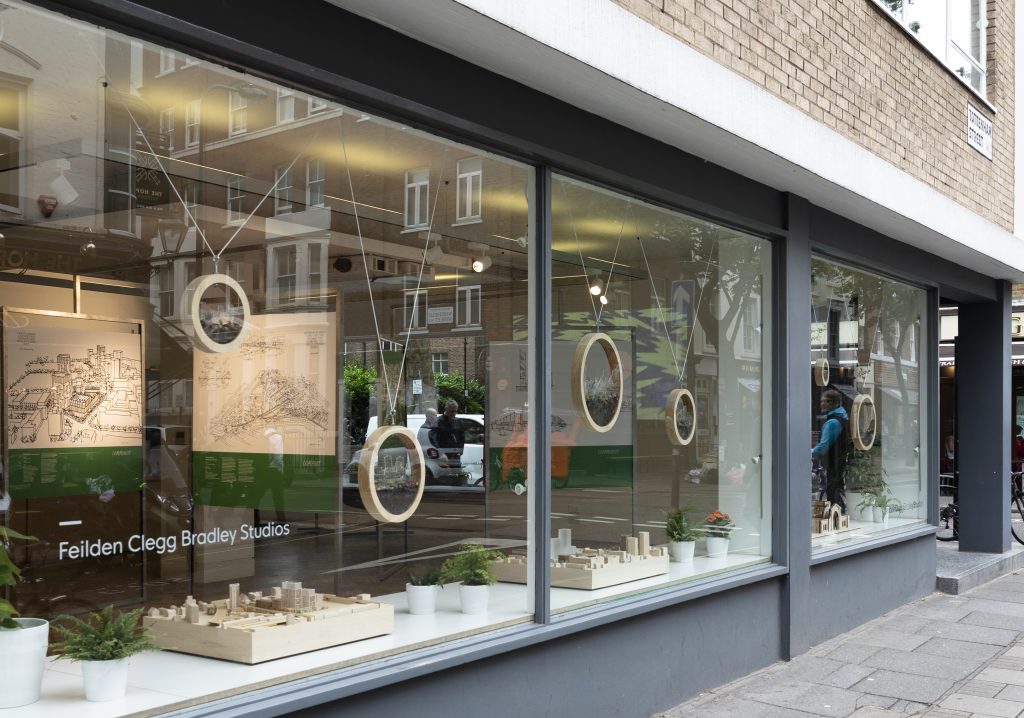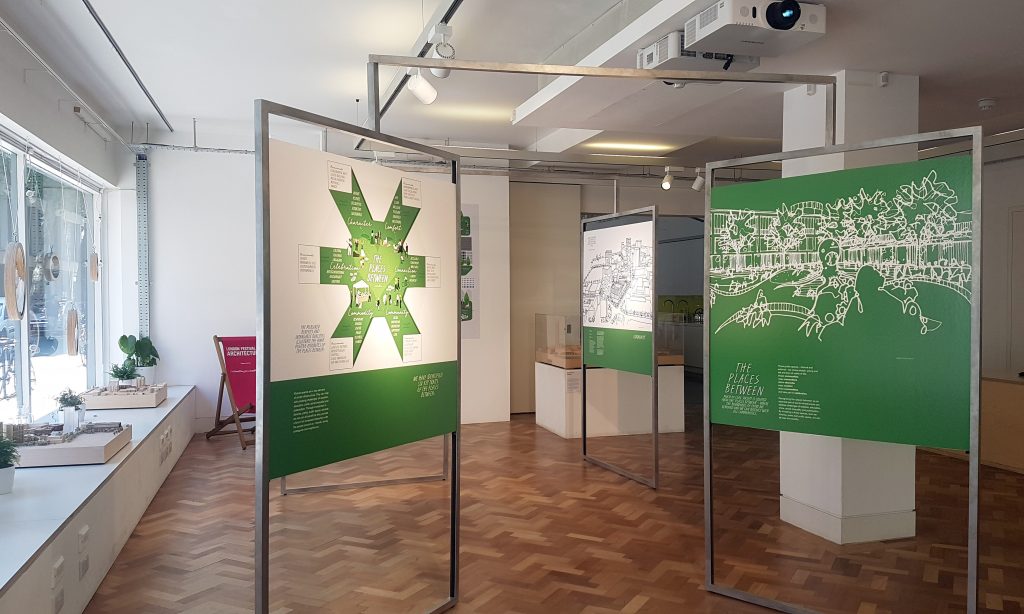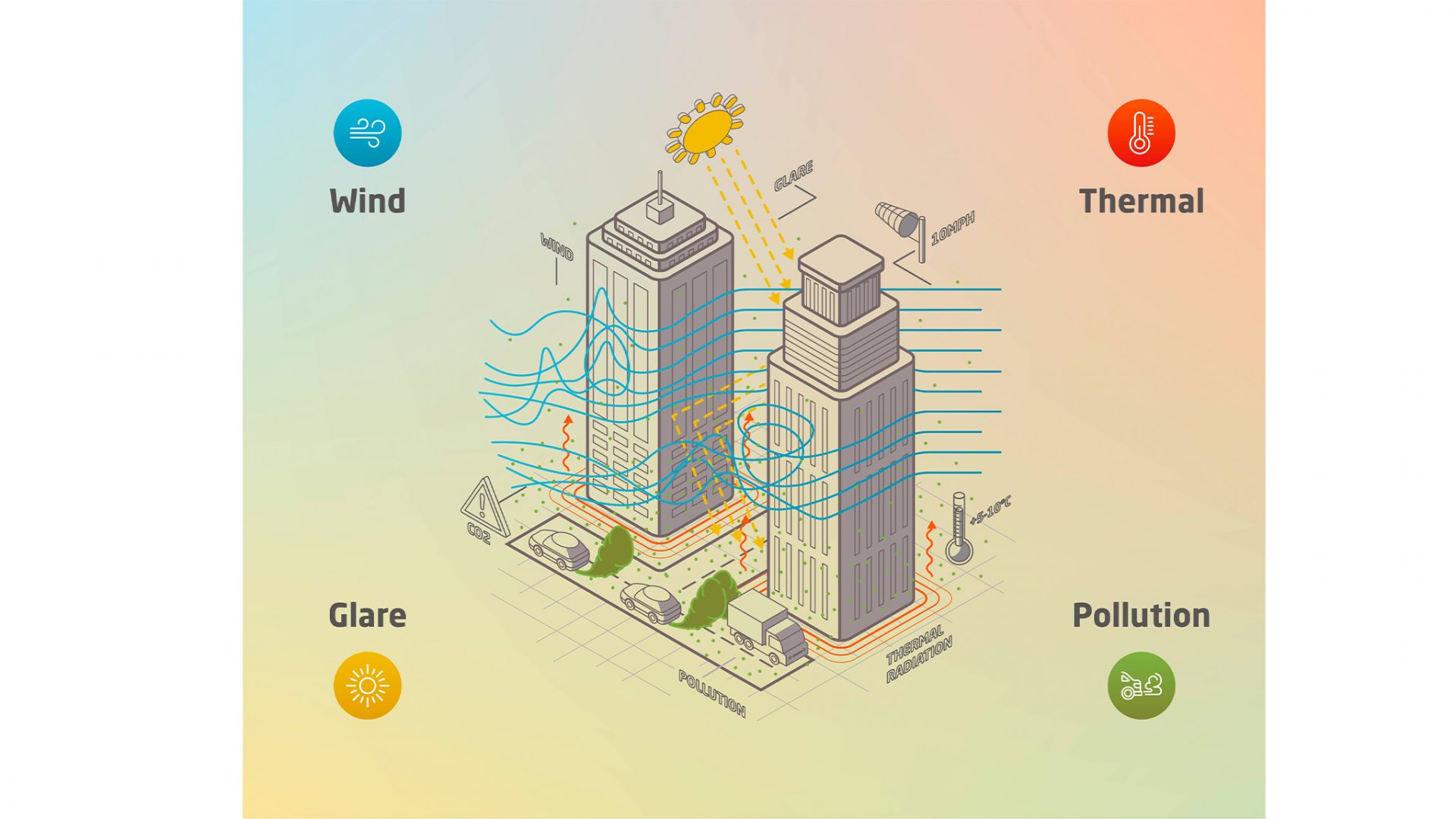- Fliss Childs is the Head of Communications at Feilden Clegg Bradley Studios. In this piece Fliss with the FCBStudios team explore the theme of boundaries in relation to their exhibition The Places Between, which ran as part of the LFA 2019.

‘More important than buildings are the public spaces in between them’
Amanda Burden noted this when she was director of the New York City Department of City Planning. Indeed, much of civil society is created in ‘The Places Between’ – where the boundaries of entry are removed and we can interact with all communities.
FCBStudios’ latest exhibition, part of the LFA 2019, looked at how we can design these spaces within our environment to help to establish communities in new neighbourhoods and become the places where people, young and old and from all walks of life shape communities, make connections, define character, enjoy comfort, share commodities and take part in celebration.
Recognising these places, both internal and external as an essential part of social infrastructure can help us to address challenges of isolation, education, crime, social inequality and polarisation. Investment in spaces such as libraries, parks and public space can benefit everyone, as a forum for increased interaction with friends, family, colleagues and neighbours.

We have identified six key traits of the places between and the measured benefits and intangible qualities which illustrate their many positive attributes.
Community is at the heart of all cities. Social, interactive, supportive society thrives through social equity, street life and community groups. Successful communities become attractive to outsiders and drive growth. The Britannia Project expands a thriving London community with the facilities and amenities it will need to accommodate and support Hackney’s expanding population. Our masterplan puts a park and car-free public realm at the centre of the expanded community, providing a meeting space for organised and impromptu activities.
Connection: Walkable, accessible neighbourhoods are easy and convenient to get around, have lower air pollution, better street life and more successful shops and businesses. Masterplans, like Battersea Exchange, make the most of existing and new transport hubs – train stations, major bus routes, the underground or tram stops – to create an active economic and social hub for an area. These are places that people use, at first out of the necessity of travel, but soon develop a life and personality of their own.
The character of an area is often determined by its history, heritage, beauty and inhabitants. By working within existing communities and contexts, new developments can enhance or adapt the character of the places around them. Cultural regeneration can be a powerful tool, using existing buildings that have fallen out of use to reignite an area. The regeneration of the East Wing of Alexandra Palace – the ‘people’s palace’ – has breathed new life into a much-loved cultural icon, integrating a new technical infrastructure while retaining the unique character of its historic spaces and inviting a new generation to experience the building and its broad programme of events.
Safe, clean, inclusive neighbourhoods are a comfort and give residents and visitors confidence in their environment. Through good design of public space and thoroughfares, including lighting and microclimates neighbourhoods can be designed to be pleasant and welcoming. The South Kilburn Estate Regeneration project has put an urban park and improved public realm at the heart of the new community, creating a green network of places that extend beyond the site boundary of people to come together to relax, play and socialise in a comfortable green and peaceful living environment.
Commodity: The economy of a successful neighbourhood thrives. Gradually property values, local ownership, community groups and land use patterns reflect growing civic pride. As part of the initial placemaking phase of Great Eastern Quays, Bow Arts are curating the entire commercial estate on behalf of Notting Hill Genesis to include a diverse range of interesting commercial uses, form artists studios, workspaces, retail, cafe and restaurant space to line the dockside and create a focal point for the community.
Celebration: A thriving community often expresses itself through seasonal, intergenerational or neighbourly celebration. Meanwhile uses, exhibitions and street parties are signs of successful, unified environments. Our masterplan and subsequent refurbishment of the Southbank Centre’s Hayward Gallery and Queen Elizabeth Hall buildings celebrate the existing buildings and social optimism of their Brutalist designers. The renewal of the buildings, which was completed last year enhances the experiences of visitors, performers and passers-by and celebrates the unique role of Southbank Centre in the capitals cultural life.
The places between are the pieces of a city that provide a flexible framework, and the space for people to connect, interact and make communities. Successful spaces create pride, creativity, and nurturing places for all to live, work and grow.

All photographs by Richard Battye for FCBStudios.






